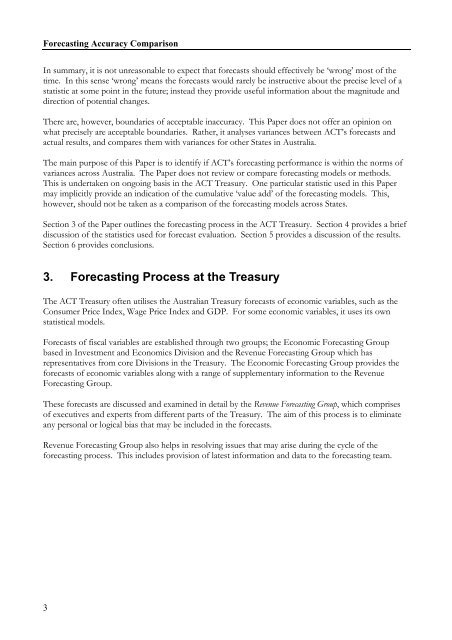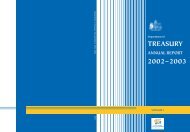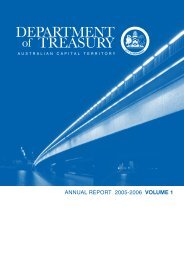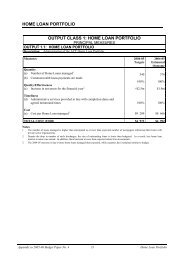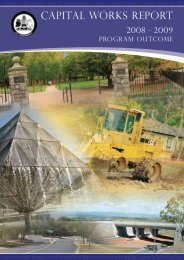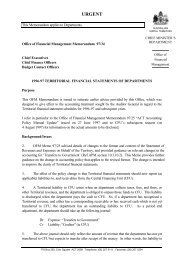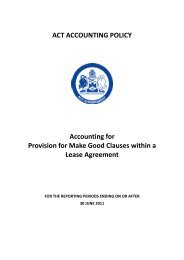Forecasting Accuracy - ACT Budget.pdf - Treasury
Forecasting Accuracy - ACT Budget.pdf - Treasury
Forecasting Accuracy - ACT Budget.pdf - Treasury
You also want an ePaper? Increase the reach of your titles
YUMPU automatically turns print PDFs into web optimized ePapers that Google loves.
<strong>Forecasting</strong> <strong>Accuracy</strong> Comparison<br />
In summary, it is not unreasonable to expect that forecasts should effectively be ‘wrong’ most of the<br />
time. In this sense ‘wrong’ means the forecasts would rarely be instructive about the precise level of a<br />
statistic at some point in the future; instead they provide useful information about the magnitude and<br />
direction of potential changes.<br />
There are, however, boundaries of acceptable inaccuracy. This Paper does not offer an opinion on<br />
what precisely are acceptable boundaries. Rather, it analyses variances between <strong>ACT</strong>’s forecasts and<br />
actual results, and compares them with variances for other States in Australia.<br />
The main purpose of this Paper is to identify if <strong>ACT</strong>’s forecasting performance is within the norms of<br />
variances across Australia. The Paper does not review or compare forecasting models or methods.<br />
This is undertaken on ongoing basis in the <strong>ACT</strong> <strong>Treasury</strong>. One particular statistic used in this Paper<br />
may implicitly provide an indication of the cumulative ‘value add’ of the forecasting models. This,<br />
however, should not be taken as a comparison of the forecasting models across States.<br />
Section 3 of the Paper outlines the forecasting process in the <strong>ACT</strong> <strong>Treasury</strong>. Section 4 provides a brief<br />
discussion of the statistics used for forecast evaluation. Section 5 provides a discussion of the results.<br />
Section 6 provides conclusions.<br />
3. <strong>Forecasting</strong> Process at the <strong>Treasury</strong><br />
The <strong>ACT</strong> <strong>Treasury</strong> often utilises the Australian <strong>Treasury</strong> forecasts of economic variables, such as the<br />
Consumer Price Index, Wage Price Index and GDP. For some economic variables, it uses its own<br />
statistical models.<br />
Forecasts of fiscal variables are established through two groups; the Economic <strong>Forecasting</strong> Group<br />
based in Investment and Economics Division and the Revenue <strong>Forecasting</strong> Group which has<br />
representatives from core Divisions in the <strong>Treasury</strong>. The Economic <strong>Forecasting</strong> Group provides the<br />
forecasts of economic variables along with a range of supplementary information to the Revenue<br />
<strong>Forecasting</strong> Group.<br />
These forecasts are discussed and examined in detail by the Revenue <strong>Forecasting</strong> Group, which comprises<br />
of executives and experts from different parts of the <strong>Treasury</strong>. The aim of this process is to eliminate<br />
any personal or logical bias that may be included in the forecasts.<br />
Revenue <strong>Forecasting</strong> Group also helps in resolving issues that may arise during the cycle of the<br />
forecasting process. This includes provision of latest information and data to the forecasting team.<br />
3


